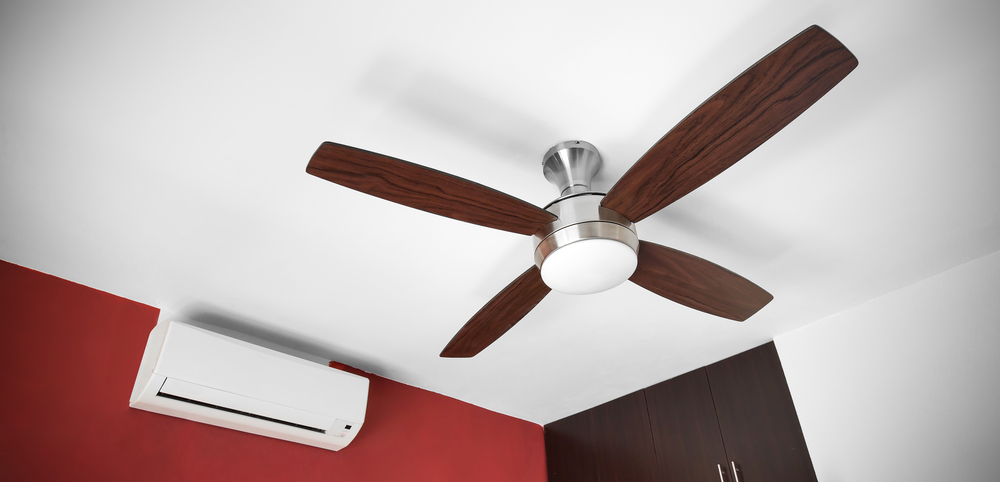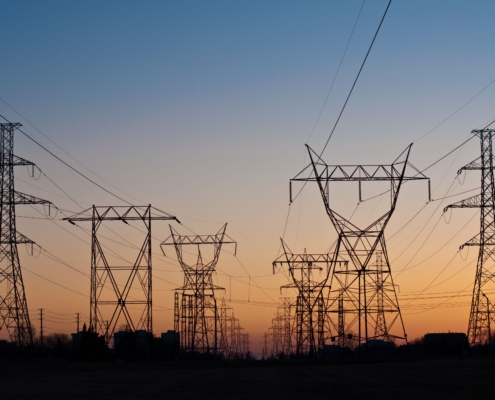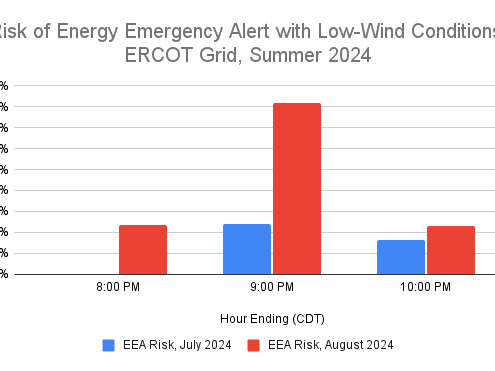Last Updated on June 20, 2023 by Mary Pressler
What Consumes the Most Energy? Air Conditioning or Fans?
Homes and businesses tend to get their highest power bills in summer, and there are two reasons for this: electricity consumption increases due to air conditioning, and electricity prices increase due to high demand.
Since air conditioning is the top energy expense in summer, you have probably asked yourself: How much can I save by using a fan instead of an AC?
- A fan uses a small fraction of the electricity required by an air conditioner, but it also has much less cooling power.
- The exact savings will depend on the size of the air conditioner being compared with a fan, and also your typical usage habits.
- The type of AC unit and its nameplate efficiency are also important. An old window-type AC will use a lot more power than a newer mini-split with a high SEER rating, even if both have the same cooling capacity!
There is also an important fact that often gets ignored: Your thermostat setting has a major impact on electricity consumption. According to the US Department of Energy, you can reduce air conditioning costs by up to 10% if you simply raise the thermostat 8-10°F, during 8 hours per day. The same principle applies for space heating during winter, if you lower the thermostat by the same amount on a similar schedule.
Comparing Energy Consumption: Air Conditioner vs Ceiling Fan
Fans and air conditioners are very different devices. A fan creates a cooling sensation by keeping air in circulation, which means your body can dissipate heat more effectively, but the air itself is not cooled.
An air conditioner actually cools the air in a room, similar to how a refrigerator works. This leads to an interesting conclusion: an air conditioner will cool a room even when nobody is present, but using a fan in an empty room is pointless – you only get the cooling effect when air is being blown in your direction.
Using only a ceiling fan may not be enough in Texas during the hottest summer days, but you can save on power bills by switching off the AC on days with milder heat. Here we will compare the typical electricity cost of a far with three AC options during 100 hours of use:
- Old window-type air conditioner
- Mini-split air conditioner, average efficiency
- Mini-split air conditioner, top efficiency
- Ceiling fan (75 watts, typical for a high-powered fan)
Window-type and mini-split air conditioners use slightly different efficiency metrics, and understanding the difference is important before comparing them. Window-type ACs use the Combined Energy Efficiency Ratio (CEER), while mini-split ACs use the Seasonal Energy Efficiency Ratio (SEER).
The CEER is an average efficiency metric that considers how the compressor of a window air conditioner cycles on and off. You can divide the cooling capacity (BTU/hour) by the CEER, and you will get the average power consumption.
On the other hand, the SEER considers performance throughout the warmer months, when the AC must deal with a wide range of outdoor temperatures. You can also divide the cooling capacity (BTU/hour) by the SEER to determine average power consumption.
Let’s assume a capacity of 12,000 BTU/hour for all three air conditioners being considered, and the following efficiency ratings:
- CEER 8 for the window air conditioner
- SEER 16 for the average efficiency mini-split
- SEER 28 for the top efficiency mini-split
Estimating the power consumption in watts is simple, once you know the cooling capacity in BTU/h and the respective efficiency rating (CEER or SEER):
| Air Conditioner | Cooling Capacity | Efficiency | Average Wattage |
| Window-type unit | 12,000 BTU/h | CEER 8 | 1,500 W |
| Average efficiency mini-split | 12,000 BTU/h | SEER 16 | 750 W |
| Top efficiency mini-split | 12,000 BTU/h | SEER 28 | 429 W |
As you can see, the energy efficiency rating has a major impact on power consumption. However, a 75W ceiling fan consumes much less power than all three AC units, even the highly efficient SEER 28 mini-split.
Using this information, we can estimate how much you would spend in 100 hours of use, assuming an electricity price of 20 cents/kWh. Just keep in mind that these values are in watts, and we must convert them to kilowatts before proceeding (divide by 1,000).
| Device | Wattage | Hours | kWh Usage | Cost |
| 75W ceiling fan | 0.075 kW | 100h | 7.5 kWh | $1.50 |
| High efficiency mini-split | 0.429 kW | 100h | 42.9 kWh | $8.58 |
| Avg. efficiency es mini-split | 0.75 kW | 100h | 75 kWh | $15 |
| Window AC unit | 1.5 kW | 100h | 150 kWh | $30 |
As you can see, the fan consumes 20 times less electricity than the window AC unit in a given time period. The difference in consumption is less drastic when compared with a mini-split, but still significant. Under the conditions assumed in this example, the fan consumes 20 times less energy than the window air conditioner, 10 times less than the average efficiency mini-split, and 6 times less than the high efficiency mini-split.
You can reduce air conditioning costs by making sure your home is properly insulated and free of air leaks. If you suspect these issues are driving up your HVAC cost, a home energy audit can detect them.
If you have a heat-related illness, the US CDC recommends using an air conditioner whenever the ambient temperature exceeds 90°F, and especially when approaching 100°F.











Leave a Reply
Want to join the discussion?Feel free to contribute!